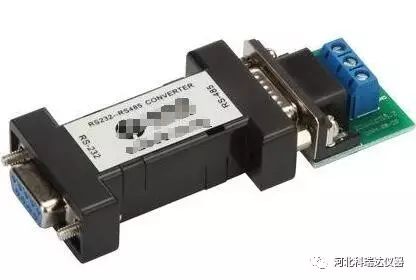
1. Different Transmission Methods.
RS-232 uses an unbalanced transmission method, known as single-ended communication. In contrast, RS-485 employs balanced transmission, i.e., differential transmission.
2. Different Transmission Distances.
RS-232 is suitable for communication between local devices, with a transmission distance generally not exceeding 20 meters. RS-485, on the other hand, can transmit over distances ranging from several dozen meters to thousands of meters.
3. RS-232 allows only point-to-point communication, whereas the RS-485 interface can connect up to 128 transceivers on the bus.
RS-232 is defined as a single-ended standard that increases communication distance in low-speed serial communication. Typical RS-232 signals swing between positive and negative levels. When transmitting data, the transmitter outputs a positive level between +5V and +15V, and a negative level between -5V and -15V. When no data is being transmitted, the line is at TTL level. From the start of data transmission to the end, the line level transitions from TTL level to RS-232 level and back to TTL level.
The typical operating levels for the receiver are +3V to +12V and -3V to -12V. Due to the small difference of about 2V to 3V between the sending and receiving levels, its common-mode rejection capability is poor. Coupled with the distributed capacitance on the twisted pair, the maximum transmission distance is about 15 meters, with a maximum speed of 20kb/s. RS-232 is designed for point-to-point communication (using only one pair of receiving and transmitting devices), with a driver load of 3 to 7 kΩ. Therefore, RS-232 is suitable for communication between local devices.
RS-485, unlike RS-232, uses differential transmission for data signals, also known as balanced transmission. It uses a pair of twisted wires, defining one wire as A and the other as B. Typically, the positive level between the sending driver A and B is +2V to +6V, representing one logic state, while the negative level is -2V to +6V, representing another logic state. There is also a signal ground C, and in RS-485, there is an “enable” terminal. The “enable” terminal is used to control the connection and disconnection of the sending driver and transmission line. When the “enable” terminal is activated, the sending driver is in a high-impedance state, known as the “third state”, which is distinct from logical “1” and “0”. The receiver is defined relative to the transmitter, with the receiving and transmitting ends connected through a balanced twisted pair, corresponding AA to BB. When the voltage between AB at the receiving end exceeds +200mV, it outputs a positive logic level; if it is less than -200mV, it outputs a negative logic level. The range of voltage levels received by the receiver on the balanced line is typically between 200mV and 6V.
Provided by: After-sales Service Jing Nan
Reply to the public account ” Phone” to contact Ke Ruida sales manager~
WeChat ID: createc1718Follow us
